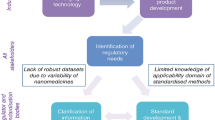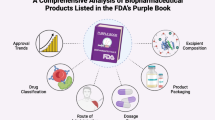Abstract
Objectives
The aim of this study was to develop and optimize the production of upadacitinib extended-release tablets containing biosynthesized hydrophilic carriers and/or polymers in the core and coating. This was achieved by applying quality by design (QbD) approach and its built-in quality control aspects to adhere to the general principles of sustainability including subsistence, efficiency, and consistency during the product life cycle. Upadacitinib is an inhibitor of the Janus kinase class of enzymes. In this study, the characterization of the reference product, physicochemical parameters of the drug molecule, and the quality target product profile was considered along with critical attributes of quality to initiate drug development. Critical attributes related to material properties, process parameters, and the formulation variables were identified, and their preliminary level of risk was assessed. The factorial design of an experiment with three center points was achieved using Design Expert v12 to investigate the customary monolithic extended-release tablets of matrix formulation. In order to evaluate tablet performance, critical quality attributes (CQAs) were determined by dissolution tests. Finally, factors that can influence the formulation, including its compositions, manufacturing procedures, and analytical evaluation, were examined. The goal was to identify formulations that exhibit a similar release pattern through the entire 12-h dissolution testing period.
Materials and Methods
Various release rates of biosynthesized polymer-based upadacitinib extended-release formulations were compared to the reference product, Innovator (Rinvoq), using in vitro dissolution test. The selected “T-5” formulation was optimized and evaluated using the QbD method to satisfy the principles of sustainability throughout the product life cycle.
Results
All experimental upadacitinib tablet formulations demonstrated favorable drug release patterns, though not to the required extent. However, the “T-5” formulation released 80% of the drug within the required time.
Conclusions
The “T-5” formulation was considered suitable for the further development of extended-release tablets of upadacitinib, as it contained optimal amount of biosynthesized hydrophilic polymer.



Similar content being viewed by others
References
Nair AK, Ramana PV, Rao PVB, Reddy BH, Ganthi HKR, Mallu UR. Carobomer based controlled release designs of atorvastatin calcium tablets evaluated using quality by design (QbD) approach. Am J Anal Chem. 2017;8:189–209. https://doi.org/10.4236/ajac.2017.83016.
Mamatha T, Koneru A, Hadi MA, Qureshi HK. Formulation and evaluation of extended-release tablets of an antidepressant drug venlafaxine HCL. Int J Res Pharm Sci. 2018;9(4):1146–1153. https://doi.org/10.26452/ijrps.v9i4.1647.
Sloneker JH, Orentas DG. Nature. 1962;194:478–9.
Sloneker JH, Orentas DG, Jeanes A. Can J Chem. 1964;42:1261–9.
Jeanes A, Pittsley J, Senti FR. Polysaccharide B-1459: A new hydrocolloid polyelectrolyte produced from glucose by bacterial fermentation. Chem- J Appl Poly Sci.1961.
Leela JK, Sharma G. Studies on xanthan production from Xanthomonas campestris. Bioprocess Eng. 2000;23(6):687–9.
Varshosaz J, Tavakoli N, Kheirolahi F. Use of hydrophilic natural gums in formulation of sustained-release matrix tablets of tramadol hydrochloride. AAPS PharmSciTech 2006;7(1) Article 24.
Andreopoulos AG, Tarantili PA. Xanthan gum as a carrier for controlled release of drugs. J Biomater Appl. 2001;16(1):34–46.
Vendruscolo CW, Andreazza IF, Ganter Ferrero JLC, Bresolin TM, Xanthan and galactomannan (from M. scabrella) matrix tablets for oral controlled delivery of theophylline. Int J Pharm. 2005; 296(1–2):1–11.
Talukdar MM, Rombaut P, Kinget R. The release mechanism of an oral controlled - release delivery system for indomethacin. Pharm Dev Technol. 1998;3(1):1–6.
Yeole PG, Galgatte UC, Babla IB, Nakhat PD. Design and evaluation of xanthan gum-based sustained release matrix tablets of diclofenac sodium. Indian J Pharm Sci. 2006;68(2):185–9.
Rinvoq Pill. (upadacitinib) extended-release tablets, for oral use (Initial U.S. Approval: 2019) prescribing information leaflet. https://dailymed.nlm.nih.gov/dailymed/drugInfo.cfm?setid=2966aec7-2ef0-923c-d8ff-fe1a957bf095. Revised 04/2022.
Ghoreschi K, Laurence A, O’Shea JJ. Janus kinases in immune cell signaling. Immunol Rev. 2009;228(1):273–87.
Biggioggero M, Becciolini A, Crotti C, Agape E, Favalli EG. Upadacitinib and filgotinib: the role of JAK1 selective inhibition in the treatment of rheumatoid arthritis. Drugs in Context. 2019;8:212–595. https://doi.org/10.7573/dic.212595.
Tanaka Y. A review of upadacitinib in rheumatoid arthritis. Mod Rheumatol. 2020;30(5):779–87. https://doi.org/10.1080/14397595.2020.1782049.
Avci AB, Feist E, Burmester GR. Early phase studies of JAK1 selective inhibitors in rheumatoid arthritis. Rheumatology 2021;60:ii11-ii16. https://doi.org/10.1093/rheumatology/keaa893.
Sandborn WJ, Feagan BG, Loftus EV Jr. Efficacy and safety of upadacitinib in a randomized trial of patients with Crohn’s disease. Gastroenterology. 2020;158(8):2123-2138.e8. https://doi.org/10.1053/j.gastro.2020.01.047.
Guttman-Yassky E, Thaci D, Pangan AL. Upadacitinib in adults with moderate to severe atopic dermatitis: 16-week results from a randomized, placebo-controlled trial. J Allergy Clin Immunol. 2020;145(3):877–84. https://doi.org/10.1016/j.jaci.2019.11.025.
Patel H, Parmar S, Patel B. A comprehensive review on quality by design (QbD) in pharmaceuticals. Int J Pharm Sci Rev Res. 2013;21(1):223–36.
Nadpara NP, Thumar RV, Kolala VN, Patel PB. “Quality by design (QbD): a complete review. Int J Pharm Sci Rev Res. 2012;17(2):20–8.
Sanjay B, Sarwar B, Babita G, Abhay A, Gyati S. Asthana, Bhupinder S. QbD oriented development and characterization of effervescent floating bioadhesive tablets of cefuroxime axetil. AAPS Pharm Sci Tech. 2016;17:1086–99. https://doi.org/10.1208/s12249-015-0431-9.
Ajinkya U, Sanjay K, Mangesh B. Design and optimization of sustained release matrix tablet of opipramol HCL by using quality by design approach”. Asian J Pharm Clin Res. 2014;7:227–34.
Jc A, Gaurav C, Francesco G. Designing the design of experiments (DOE) – an investigation on the influence of different factorial designs on the characterization of complex systems. Energy & buildings. 2011;250:111298.
Klünder B, Mittapalli RK, Mohamed MF, Friedel A, Noertersheuser P, Othman AA. Population pharmacokinetics of upadacitinib using the immediate-release and extended-release formulations in healthy subjects and subjects with rheumatoid arthritis: analyses of phase I-III clinical trials. Clin Pharmacokinet. 2019;58(8):1045–58. https://doi.org/10.1007/s40262-019-00739-3.
Mohamed MF, Jungerwirth S, Asatryan A, Jiang P, Othman AA. Assessment of effect of CYP3A inhibition, CYP induction, OATP1B inhibition, and high-fat meal on pharmacokinetics of the JAK1 inhibitor upadacitinib. Br J Clin Pharmacol. 2017;83(10):2242–8. https://doi.org/10.1111/bcp.13329.
Pharmacopeia US. USP chapter< 616> bulk density and tapped density. Rockville: United States Pharmacopeia (USP 43–NF 38). 2020;2638.
Acknowledgements
We acknowledge the gift sample of raw material provider (Aurobindo Pharma Ltd., India) and facilitators (SAS, VIT University, Vellore India).
Author information
Authors and Affiliations
Contributions
Planning, methodology, investigation, writing, drafting, and editing: Sunil Chowdary. K. Supervision, review, and editing: Dr. A.A. Napoleon.
Corresponding author
Ethics declarations
Ethics Approval
Not applicable.
Competing Interests
The authors declare no competing interests.
Additional information
Publisher's Note
Springer Nature remains neutral with regard to jurisdictional claims in published maps and institutional affiliations.
Rights and permissions
Springer Nature or its licensor (e.g. a society or other partner) holds exclusive rights to this article under a publishing agreement with the author(s) or other rightsholder(s); author self-archiving of the accepted manuscript version of this article is solely governed by the terms of such publishing agreement and applicable law.
About this article
Cite this article
Sunil Chowdary, K., Napoleon, A. Utilizing Quality by Design to Develop and Evaluate Extended-Release Upadacitinib Tablets Incorporating a Biosynthesized Polymer. J Pharm Innov 18, 1879–1891 (2023). https://doi.org/10.1007/s12247-023-09754-1
Accepted:
Published:
Issue Date:
DOI: https://doi.org/10.1007/s12247-023-09754-1




